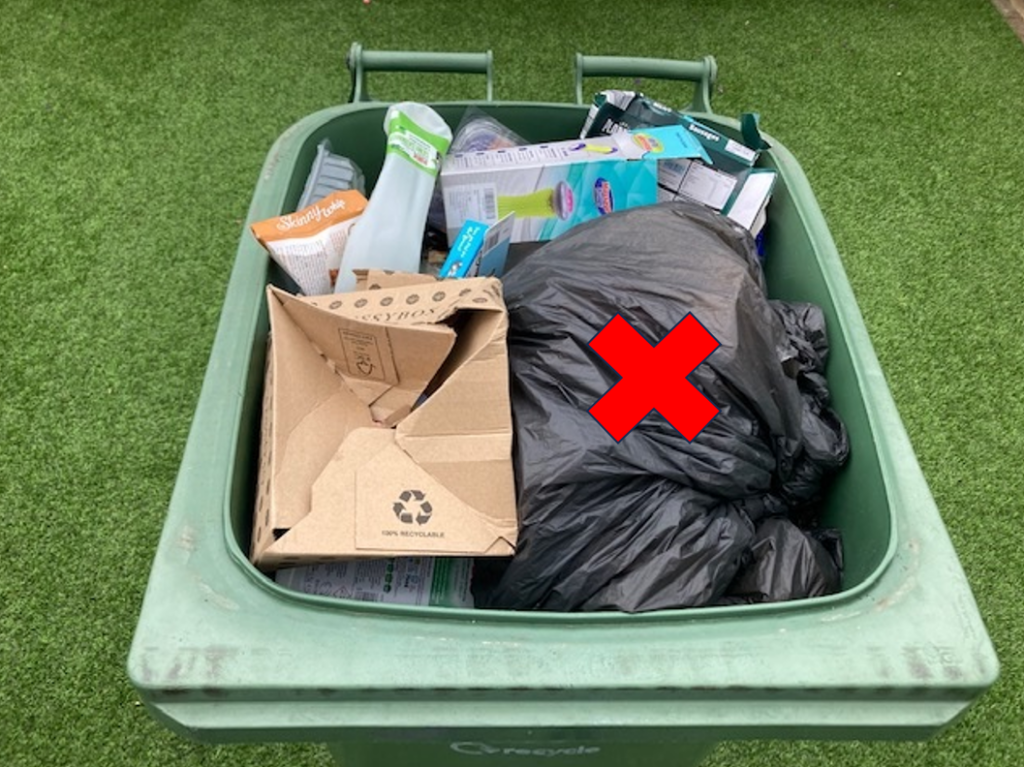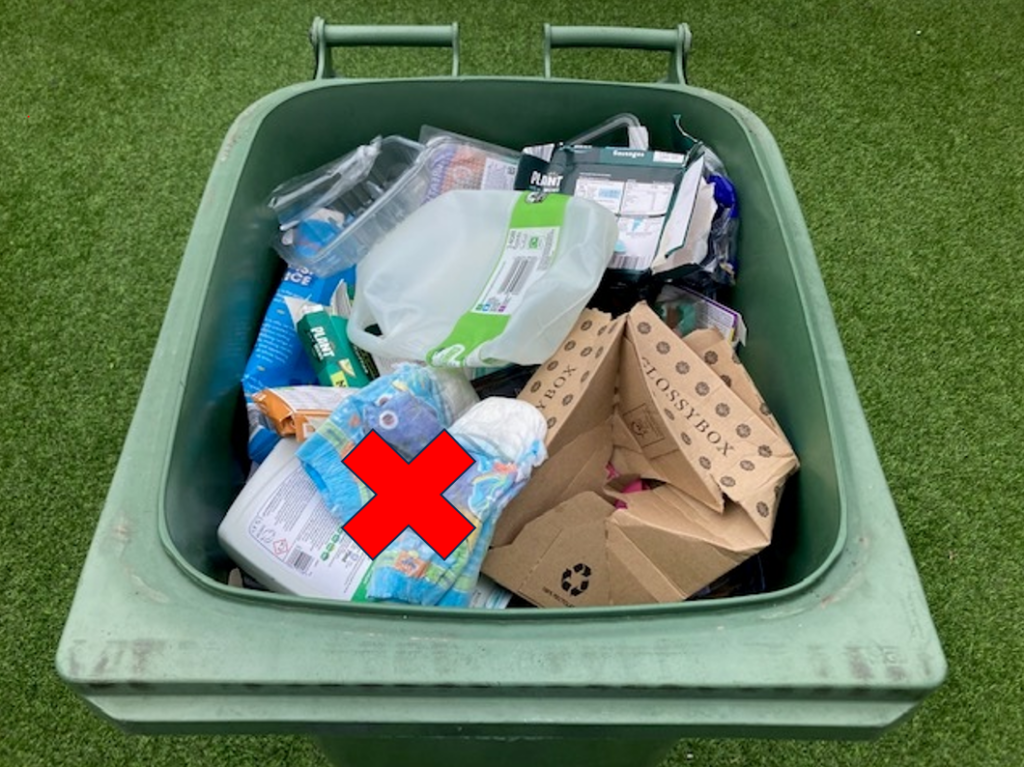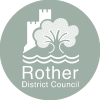Firstly, we really appreciate all your efforts to recycle as much glass, plastic, paper, card and metals. Your actions are making a big difference and helping us work towards a cleaner and more sustainable environment, Thank you.
Unfortunately, we’ve noticed a worrying trend of increasing contamination in household recycling bins over the past few months. This contamination reduces the amount of material that ends up getting recycled, undoing your hard work.
Contamination is when non-recyclable items are mixed in with recyclable ones, which could lead to your recycling bin not being collected. To give you an idea of the types of contamination we see on a frequent basis, we’ve included some pictures below of some common items that we’ve found in the recycling bin that shouldn’t be there. These include black bags of household waste, wood, food, nappies, oral care products, polystyrene and bubble wrap, fabric, and electrical items. We also regularly see recycling contained within sacks before being placed into the recycling bin (excludes shredded paper which we encourage to be placed in a clear sack), this is a particular issue at flats with bin stores. This is identified as contamination as the sack containing recycling can easily be mistaken for household waste particularly if the sack used is a black refuse sack. Recycling must be placed inside your green wheelie bin loose not in sacks. This is so the recycling can be clearly seen and identified by those collecting it as good, clean recycling. Sacks contained within recycling bins will be viewed as contamination (potential household waste), resulting in your bin not being collected.
It’s important to only place the approved materials in the recycling bin and they should be loose -NOT CONTAINED IN A BAG. If you use a bag empty the contents into your green bin and then reuse your bag. You can find a full list of what can and cannot be placed in your kerbside recycling bin on our what can I put in my bins page. We encourage you to review the list to ensure that you’re up to date, and to share this with your friends and family.
All the recycling collected in Rother is sent to a Material Recovery Facility where it is sorted into different material types before being sent off to various processors to be recycled into new products.
At the Material Recovery Facility, a sample of our recycling is inspected to see if there are any undesirable materials/contamination within the load. If contamination is too high, the whole load may be rejected and sent as waste for incineration with energy recovery, which is not at all what we want or intend.
So, let’s work together to keep our recycling clean and free from contamination. Your small actions can make a big difference.
Thank you again for your continued efforts to recycle correctly.
Examples of contamination



